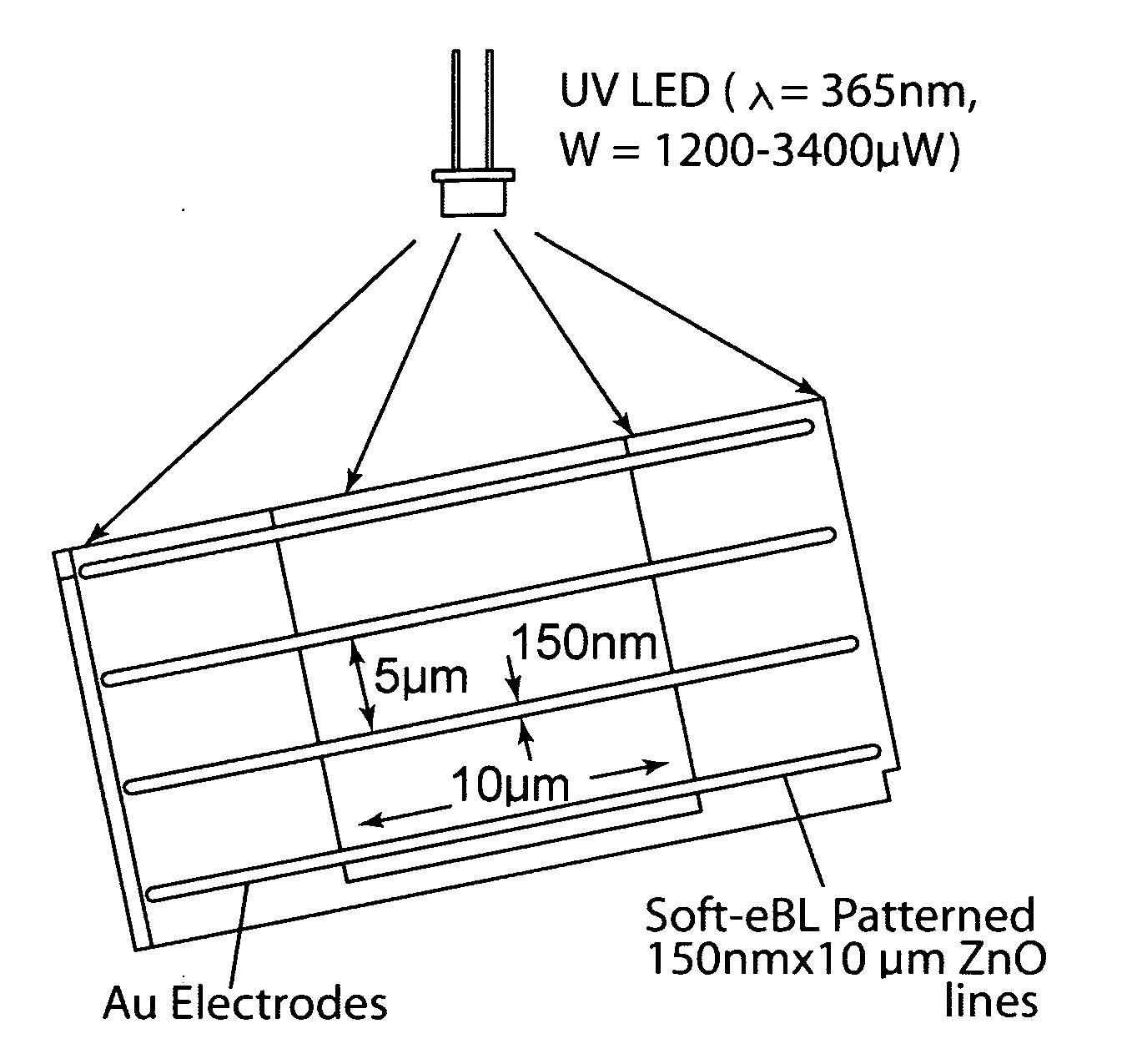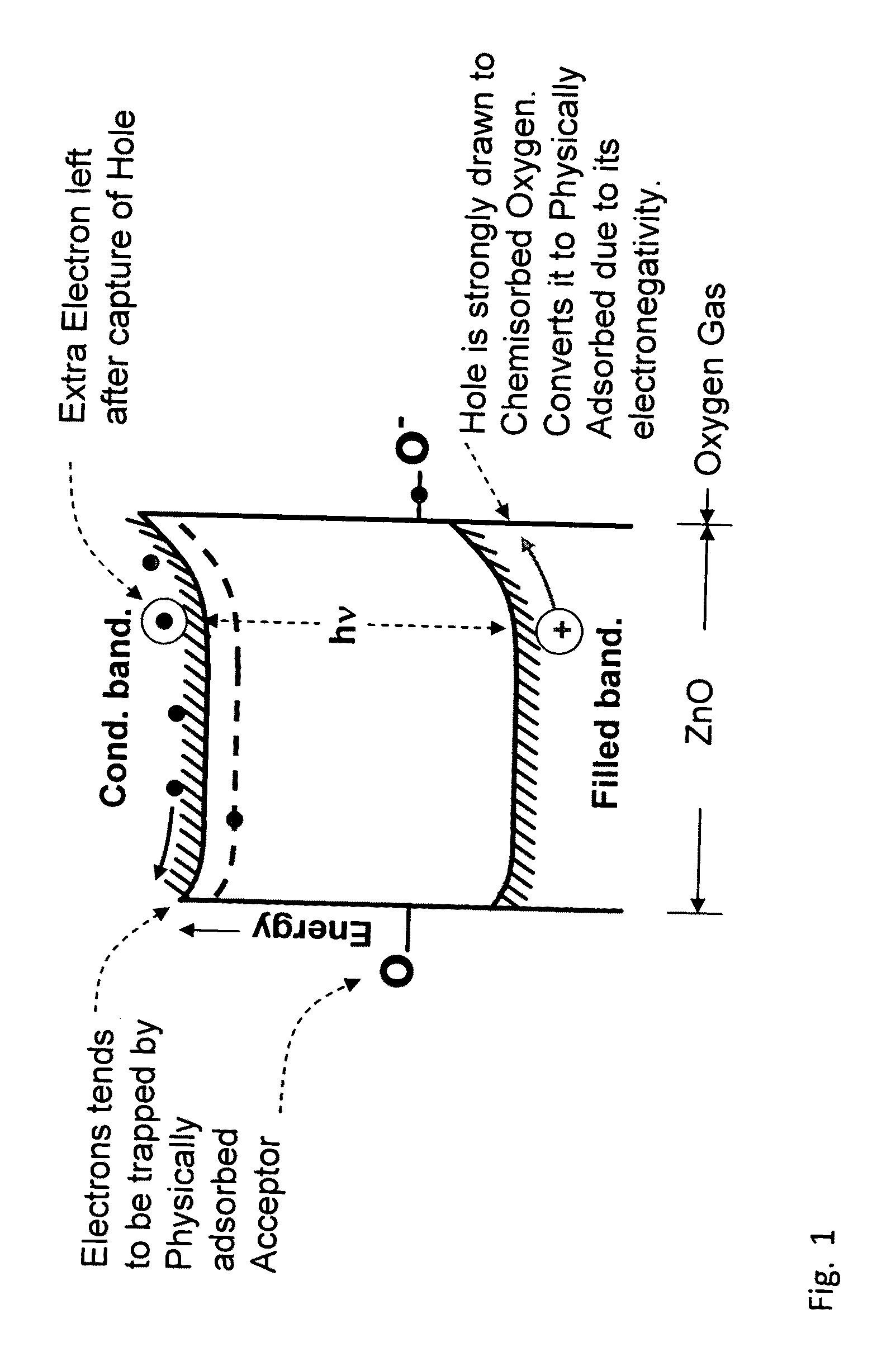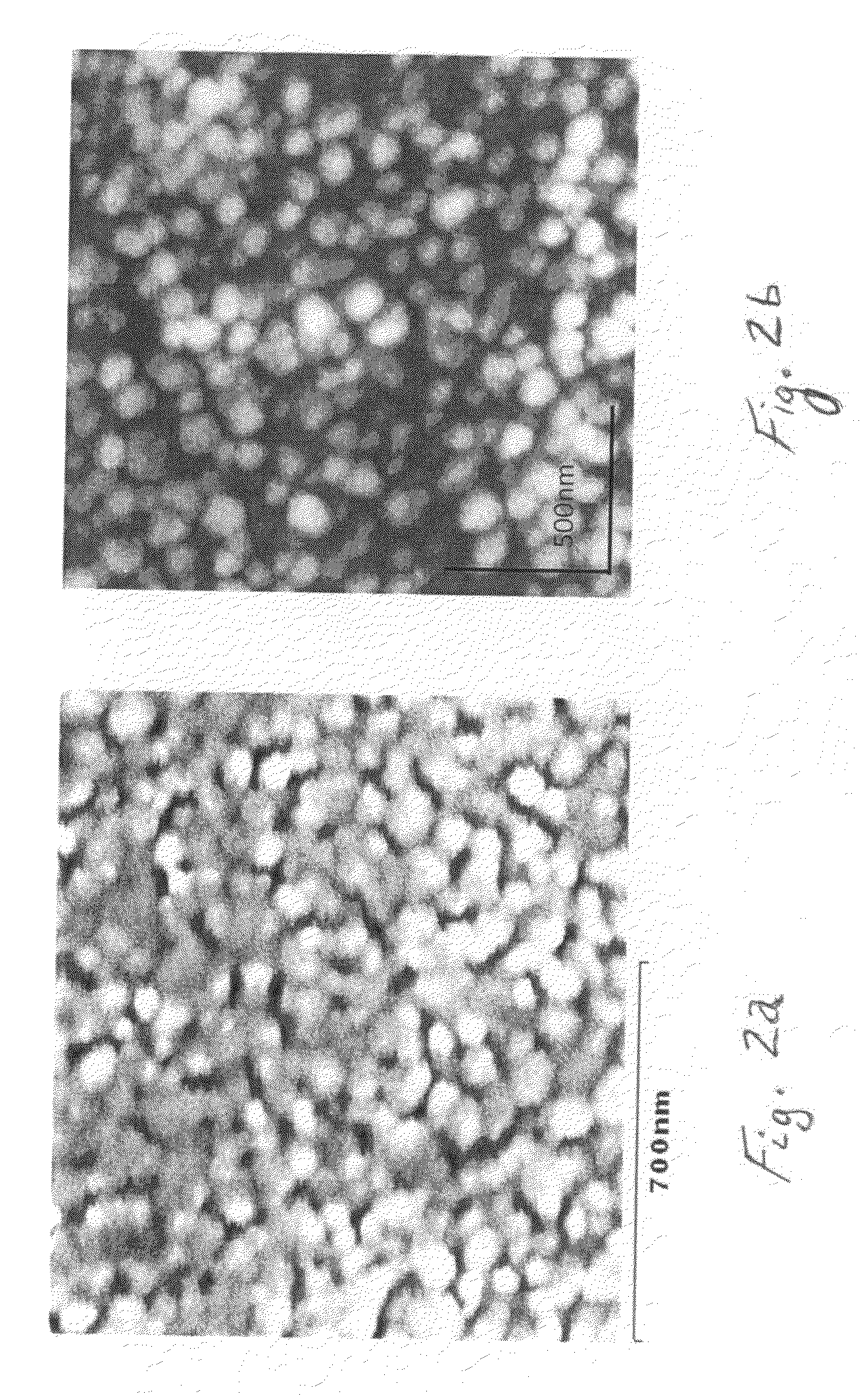Light induced gas sensing at room temprature
a technology of light-induced gas and room temprature, which is applied in the field of light-induced sensing, can solve the problems of inability to detect safe gas susceptible to fire or explosion, inability to detect high temperature metal oxide, and reliability problems of high-temperature operation of metal oxide sensors, etc., to reduce power consumption, reduce or eliminate the effect of reducing the microstructure of the sensor over time, and stable operation
- Summary
- Abstract
- Description
- Claims
- Application Information
AI Technical Summary
Benefits of technology
Problems solved by technology
Method used
Image
Examples
examples
VOC Detection
Experimental
[0036]To demonstrate the effect of UV radiation on the modulation of surface oxygen, an experiment was performed with a thin film of zinc oxide prepared by sol-gel method. Zinc oxide sol was prepared by stirring a 0.1 M solution of zinc acetate dehydrate (Zn(CH3COO)2.2H2O 99.999%, Sigma-Aldrich) in ethanol with subsequent drop by drop addition of diethanolamine (DEA: HN(CH2CH2OH)2 99%, Sigma-Aldrich) as sol stabilizer at 60° C. for 2 hours until a clear transparent and homogeneous solution was obtained [6]. The solution of was spun at 3000 rpm for 45 seconds onto SiOx / Si substrate (n-type silicon with 140° A thermally grown oxide) followed by high temperature annealing at 700° C. for one hour in air ambient for crystallization. Scanning Electron Microscope (FEI Quanta 600 FEG ESEM) and Atomic Force Microscope (Digital Instruments Nanoscope MultiMode III AFM) images of the sintered zinc oxide film showed grainy and porous structure with average grain size of...
PUM
| Property | Measurement | Unit |
|---|---|---|
| temperature | aaaaa | aaaaa |
| frequency | aaaaa | aaaaa |
| wavelength | aaaaa | aaaaa |
Abstract
Description
Claims
Application Information
 Login to View More
Login to View More - R&D
- Intellectual Property
- Life Sciences
- Materials
- Tech Scout
- Unparalleled Data Quality
- Higher Quality Content
- 60% Fewer Hallucinations
Browse by: Latest US Patents, China's latest patents, Technical Efficacy Thesaurus, Application Domain, Technology Topic, Popular Technical Reports.
© 2025 PatSnap. All rights reserved.Legal|Privacy policy|Modern Slavery Act Transparency Statement|Sitemap|About US| Contact US: help@patsnap.com



